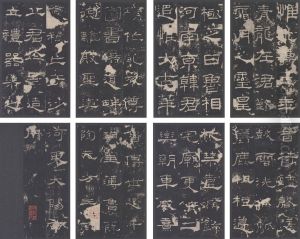Chen Hongshuo Paintings
Chen Hongshou, also known as Chen Hong Shu, was a notable Chinese painter and illustrator during the late Ming and early Qing dynasties. Born in Zhuji, Zhejiang province in 1598, Chen's artistic skills were evident from an early age. He was initially taught by Lan Ying, and later his style was influenced by the works of the Yuan dynasty painters and the ancient master Gu Kaizhi.
Chen Hongshou's work is characterized by a unique blend of traditional Chinese painting techniques with his own individual style. His paintings often feature figures with exaggerated, elongated limbs and somber expressions, which create a sense of elegance and melancholy. This signature style set his work apart from his contemporaries and has made his paintings easily recognizable.
Despite his talent, Chen's life was marked by the political turmoil of his times. The fall of the Ming dynasty in 1644, and the subsequent establishment of the Qing dynasty, had a profound impact on his career. As a loyalist to the Ming dynasty, Chen refused to serve the new Qing regime, a decision which affected his livelihood and social standing.
Chen Hongshou's works include a wide range of subjects such as figures, landscapes, flowers, and birds. He was also adept at calligraphy and poetry, both of which he integrated into his paintings. His illustrations for printed books are considered some of the finest from the Ming dynasty. His woodblock prints have also been highly valued by collectors and art historians.
Chen's later years were marked by a withdrawal from public life as he focused on his art and teaching. He had a number of students who continued his artistic legacy. After his death in 1652, Chen Hongshou's works continued to be celebrated and studied, and they have been influential in the development of later Chinese painting styles. His unique contributions to Chinese art were recognized during his lifetime and have been revered through the centuries.
